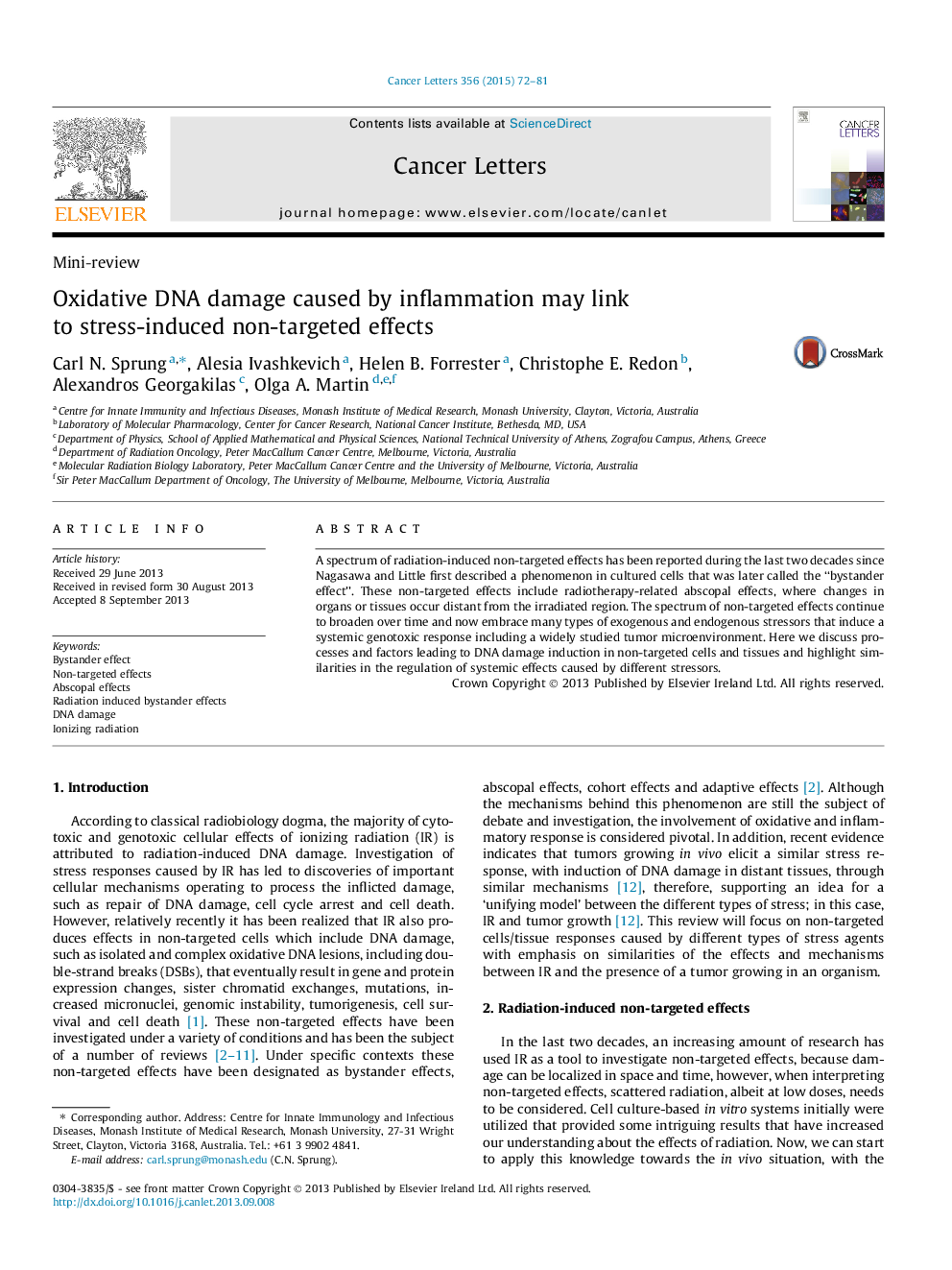| Article ID | Journal | Published Year | Pages | File Type |
|---|---|---|---|---|
| 2112545 | Cancer Letters | 2015 | 10 Pages |
•Non-targeted effects in response to radiation are well established in cell culture models and are now beginning to be understood in vivo.•The mechanism for non-targeted effects have been shown to involve direct cell to cell communication, secreted factors and immune responses.•Oxidative DNA damage has been shown to be a common endpoint for both irradiated tissue and inflammatory responses such as that induced by tumours.•Cytokines and reactive species are key molecules involved in these non-targeted effects.
A spectrum of radiation-induced non-targeted effects has been reported during the last two decades since Nagasawa and Little first described a phenomenon in cultured cells that was later called the “bystander effect”. These non-targeted effects include radiotherapy-related abscopal effects, where changes in organs or tissues occur distant from the irradiated region. The spectrum of non-targeted effects continue to broaden over time and now embrace many types of exogenous and endogenous stressors that induce a systemic genotoxic response including a widely studied tumor microenvironment. Here we discuss processes and factors leading to DNA damage induction in non-targeted cells and tissues and highlight similarities in the regulation of systemic effects caused by different stressors.
